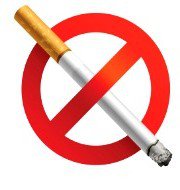World No-Tobacco Day 2016
Tuesday 31st of May 2016

Sharing is caring
This day highlights the health risks associated with consumption all forms of tobacco and advocating for effective policies to reduce tobacco consumption.
2016 Theme: “World No Tobacco Day – Get ready for plain packaging”. The theme seeks to highlight this new trend packing trend in global efforts to control tobacco products, which kill almost 6 million people annually.
What is Plain Packing?
Plain packaging of tobacco products prohibits or restricts the use of logos, brand images, colours and promotional information on packaging other than brand and product names displayed in a standard colour and font style.
How plain packaging works?
- Plain packaging reduces the attractiveness of tobacco products.
- It restricts tobacco advertising and promotion.
- It kills the glamour, which is appropriate for a harmful product that kills people.
- It limits misleading labelling and packaging.
- It increases the effectiveness of health warnings.
Plain packaging has been recommended in WHO Framework Convention on Tobacco Control (FCTC) guidelines as part of a comprehensive approach to tobacco control.
Australia was the first country to fully implement plain packaging in 2012. France and United Kingdom and Northern Ireland also have started implementation of plain packaging from May 2016.
Background
- In 1988, World Health Assembly of WHO had passed a resolution calling for the celebration of World No Tobacco Day, every year on May 31.
- Since then, the WHO has supported World No Tobacco Day (WNTD) every year, linking each year to a different tobacco-related theme.
- WNTD is one of eight official global public health campaigns marked by the WHO.
Timeline
- In 1987, the WHO's World Health Assembly passed Resolution WHA40.38, calling for April 7, 1988 to be "a world no-smoking day". The objective of the day was to urge tobacco users worldwide to abstain from using tobacco products for 24 hours, an action they hoped would provide assistance for those trying to quit.
- In 1988, Resolution WHA42.19 was passed by the World Health Assembly, calling for the celebration of World No Tobacco Day, every year on May 31. Since then, the WHO has supported World No Tobacco Day every year, linking each year to a different tobacco-related theme.
- In 1998, the WHO established the Tobacco Free Initiative (TFI), an attempt to focus international resources and attention on the global health issue of tobacco. The initiative provides assistance for creating global public health policy, encourages mobilization between societies, and supports the World Health Organization Framework Convention on Tobacco Control (FCTC). The WHO FCTC is a global public health treaty adopted in 2003 by countries around the globe as an agreement to implement policies that work towards tobacco cessation.
- In 2008, on the eve of the World No Tobacco Day, the WHO called for a worldwide ban on all tobacco advertising, promotion, and sponsorship. The theme of that year’s day was ″Tobacco-free youth″; therefore, this initiative was especially meant to target advertising efforts aimed at youth. According to the WHO, the tobacco industry must replace older quitting or dying smokers with younger consumers. Because of this, marketing strategies are commonly observed in places that will attract youth such as movies, the Internet, billboards, and magazines. Studies have shown that the more youth are exposed to tobacco advertising, the more likely they are to smoke.
- In 2015, WNTD is highlighting the health risks associated with tobacco use and advocating for effective policies to reduce tobacco consumption, including ending the illicit trade of tobacco products.
Sharing is caring
Related Post
India and Qatar share intelligence to combat hawala, terror financing
BCCI appoints Anil Kumble as the head coach of Indian Cricket Team
Union Cabinet approves cooperation between Indian and Japan on Railway Safety
No more street-lights! Solar-powered cement will be the future
V T Thomas, the Kerala cartoonist passed away
2016 is second edition of the International Day of Yoga